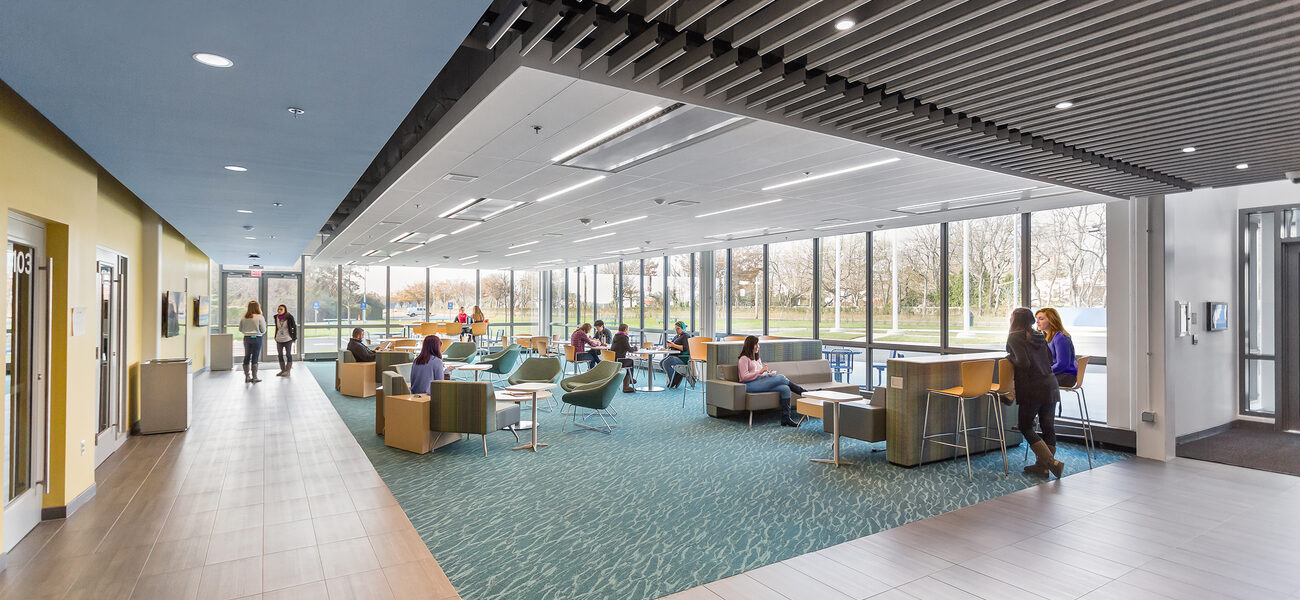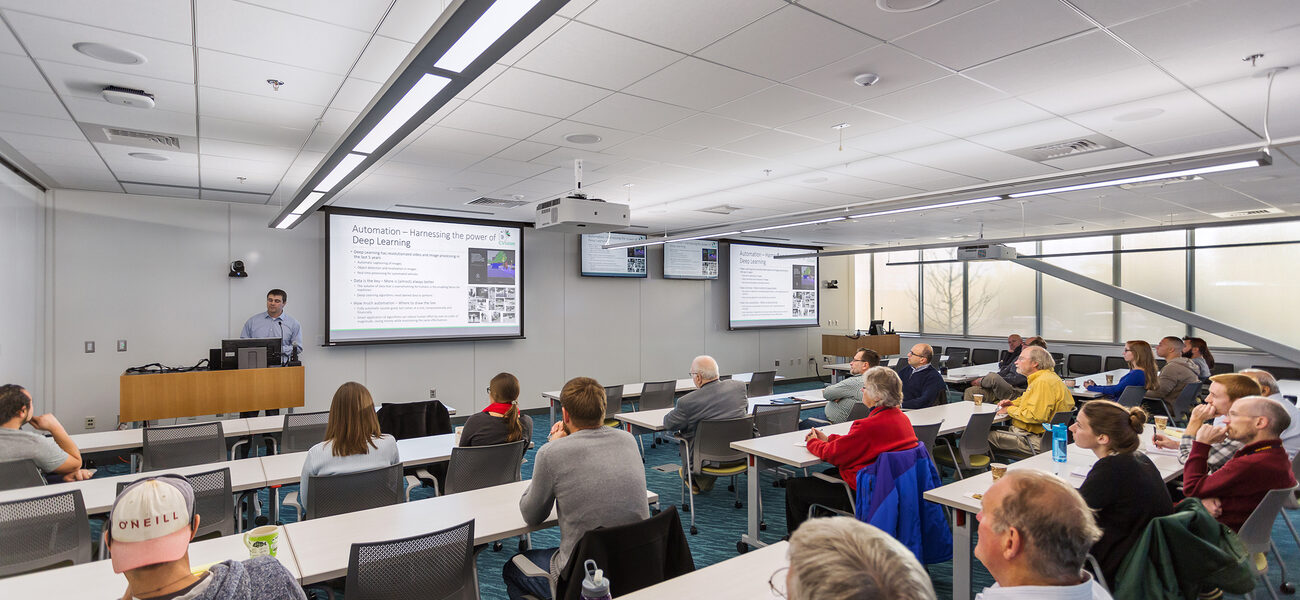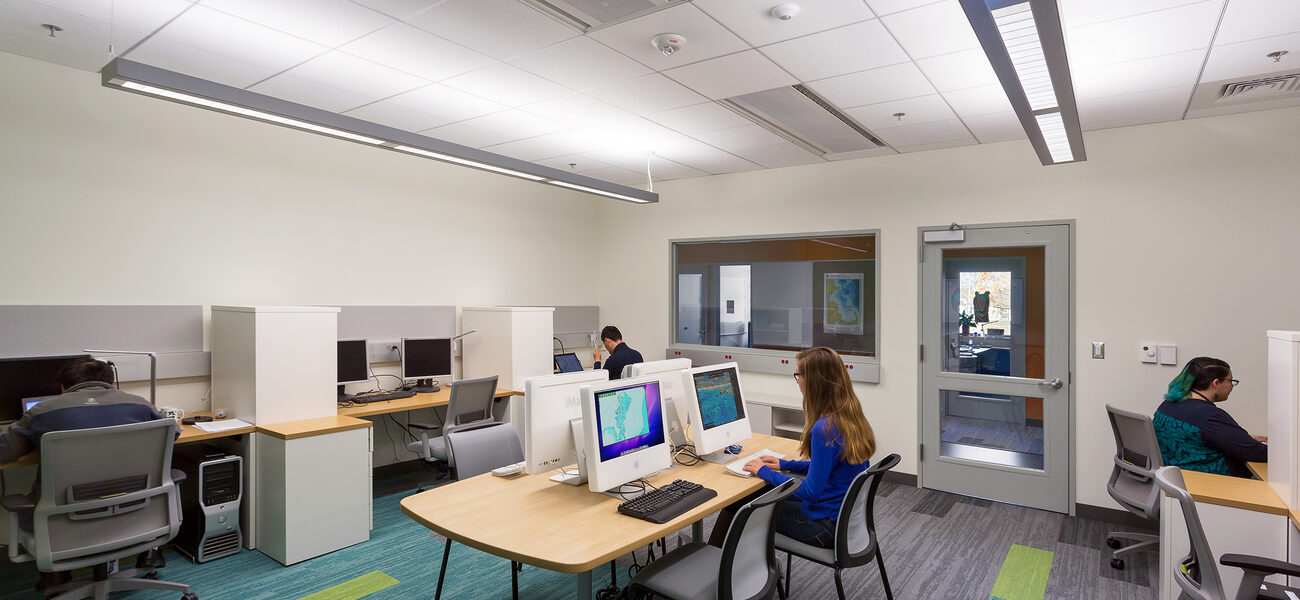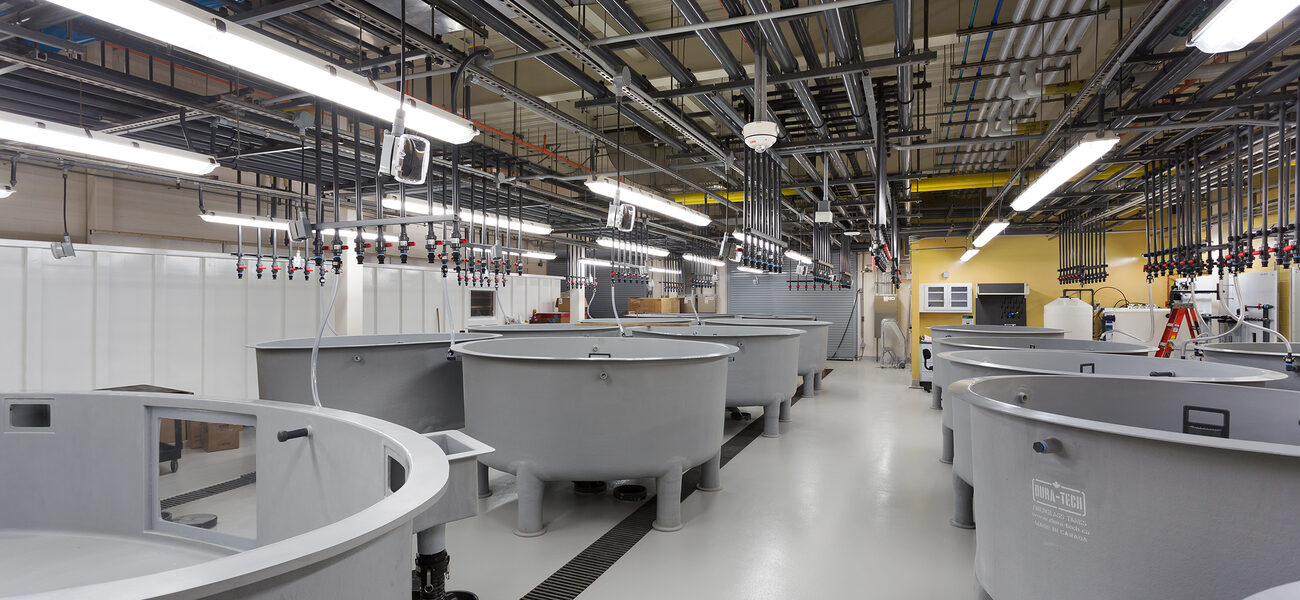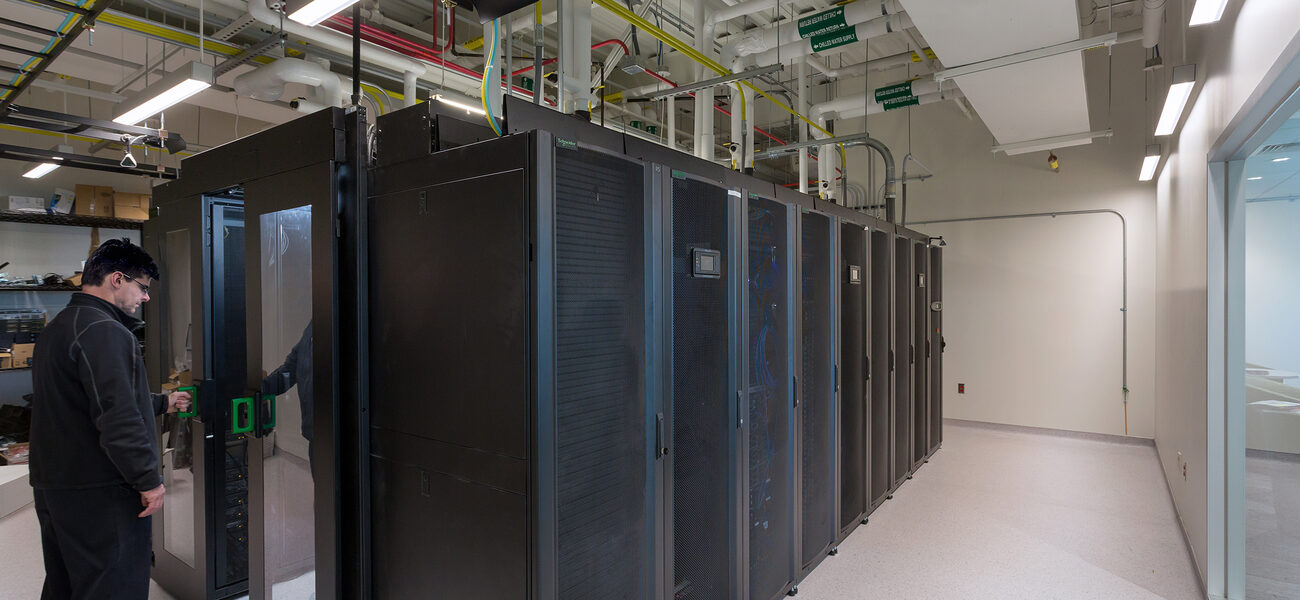The School for Marine Science and Technology (SMAST) campus expansion and construction of the new East Building alongside Clarks Cove consolidates UMass Dartmouth’s entire Marine Science research and teaching program at one site, with its over 120 faculty, staff, and students. The campus also accommodates the Massachusetts Division of Marine Fisheries (DMF) South Coast operations and its 50 staff, enhancing the continuing collaborations of SMAST and DMF in support of sustainable fisheries.
SMAST interdisciplinary research focuses on biochemical cycling, marine and coastal computational modeling, fisheries science, marine renewable energy, ocean observing/sensing, and ocean physics, with an overall mission of enhancing the well-being of the environment and humanity.
The new building supports the SMAST research mission with flexible new wet, dry, and computational laboratories, meeting and interaction space, and faculty and graduate student offices. In addition, there are highly specialized research laboratories and support facilities:
- seawater facility with holding tank for marine organism research and a large flume research tank with the ability to control the fresh seawater temperature and chemistry for individual experiments
- supercomputer server cluster for climate and oceanographic computational modeling
- high-bay storage to support fabrication and staging of ocean-going experimental equipment
Marine Science teaching, symposiums, and community functions are supported at the ground floor of the building:
- 120-seat divisible classroom with video-conferencing capabilities
- large commons and pantry with video screen displays to accommodate overflow attendees
- wet and computational teaching labs
- DMF public fishing licensing facility with separate entry.
SMAST administration office is located at the second floor lobby hub, and DMF regional offices occupy the third floor.
In keeping with the SMAST environmental research mission, sustainability and energy conservation are programmed into every aspect of the building design, including rain screen envelope design, right-sized systems, low-flow fume hoods, state-of the art machine drives and controls, energy recovery, and hydronic cooling and heating systems. The seawater system, the most energy-intensive in the building, is also designed with energy recovery technology.
The coastal location of SMAST, just above the 500-year FEMA flood plain level, is also an important design consideration, and resiliency goals guided the building planning and systems approach:
- Mechanical systems are located at the ground level and above, with no basement.
- Electrical systems are located at the second floor level, with a rooftop standby generator.
- Managed shutdown and hibernation modes are provided for critical research systems, including the supercomputer and seawater life support systems.
- The building features a hurricane-resistant envelope designed for 120 mph sustained wind speeds.
LEED Silver certification is pending for the project.
| Organization | Project Role |
|---|---|
|
Ellenzweig
|
Architect
|
|
BOND
|
Construction Manager
|
|
Hill International
|
Owner’s Program Manager
|
|
BR+A Consulting Engineers
|
M/E/P/IT/Security Engineer
|
|
Fernandez Associates
|
Fire Protection Engineer
|
|
TAG Engineers
|
Seawater Consultant
|
|
Horiuchi and Solien
|
Landscape Architect
|
|
Nitsch Engineering
|
Civil Engineer
|
|
GZA GeoEnvironmental Inc.
|
Environmental Engineer
|
|
Pieszak Lighting Design
|
Lighting Consultant
|
|
The Green Engineer
|
Sustainability Consultant
|
|
MoharDesign
|
Interiors Consultant
|
|
Ellana
|
Cost Estimator
|
|
Johnson Controls Inc.
|
Building Controls
|
|
Lenel
|
Access Control Systems
|
|
KONE Inc.
|
Elevators
|
|
Haakon Industries
|
Air Handlers
|
|
New England Lab
|
Lab Casework / Fume Hoods
|
|
Schneider Electric
|
Supercomputer Servers
|
|
Litecontrol
|
Lighting
|
